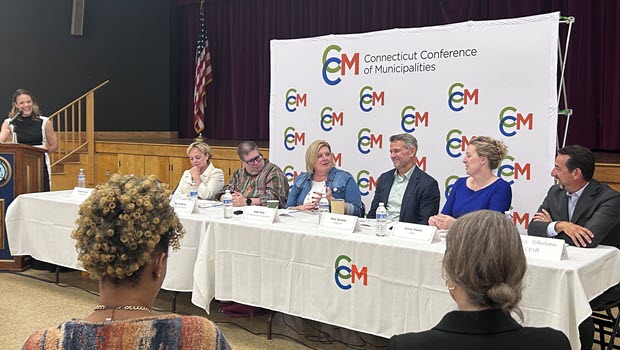A recent report from Dalio Education found that one in five young people in Connecticut are disconnected from education and employment systems or are at risk for becoming disconnected.
The report looked at 14- to 26-year-olds during the 2021-22 year and found that disconnection among youth can lead to financial insecurity, homelessness, substance abuse, and incarceration.
During a recent panel discussion in Torrington organized by Dalio Education and the Connecticut Conference of Municipalities, CEA President Kate Dias joined nonprofit service providers and local politicians to discuss how the state can best address the issues identified in the report.
“As a public school teacher for twenty plus years, there is zero in this report that surprised me,” Dias said. She said that teachers have been living the crisis for years, and asked, “How can we engage communities around action so that it’s not just the teachers’ job to solve this?”
She said that when it comes to addressing issues like food insecurity, homelessness, family troubles, instability, and decades of family trauma, communities need to start thinking about their young people as “everybody’s children.”
“When we have children and young people who are connected to an adult in the community, it doesn’t need to be just in the school, they will be more engaged,” said Torrington mayor Elinor Carbone.
“We have to remember that these are young people with aspirations, hopes, and dreams, ” said Emily Pallin, executive director of the Connecticut RISE Network. Her organization works with high school students, and she said that for some youth, something relatively small and seemingly inconsequential can push them off track—whether that’s getting sick with COVID or having to stay home to take care of a younger sibling.
“The slippery slope that can have as far as missing assignments, failing grades, starting to feel unsuccessful in school, which leads to trouble in additional courses,” can easily throw children off course, she said.
Several speakers expressed the need for more opportunities for young people who aren’t headed to college, saying more workforce training programs could help prepare those students for success.
Dias said that schools and the incentives that drive their decisions need to change in order to better prepare students for a wide variety of opportunities.
“We have a one-size-fits-all situation in education that is really difficult for us,” Dias said. “When a school district’s success is measured by SAT scores, that’s a sign that we have a system that is designed to incentivize schools to prepare children to go to college and reward them for that work. If we want systemic change, maybe we need to recognize that the SAT score is not the most important thing coming out of high school. There are a wide array of ways to be successful. We don’t acknowledge when students go into the military that that is a successful graduate. We don’t have a system that rewards taking on an apprenticeship. True change comes from pushing our values onto these systems.”
Moderator Christine Stewart of CT News Junkie asked how the changes panelists proposed can come about as the state looks ahead to the 2024 legislative session.
“If business and organized labor come forward together with a plan, it will happen here in Connecticut,” said Chris DiPentima, president and CEO of the Connecticut Business and Industry Association. “I think we’re more aligned than we’ve ever been.”







